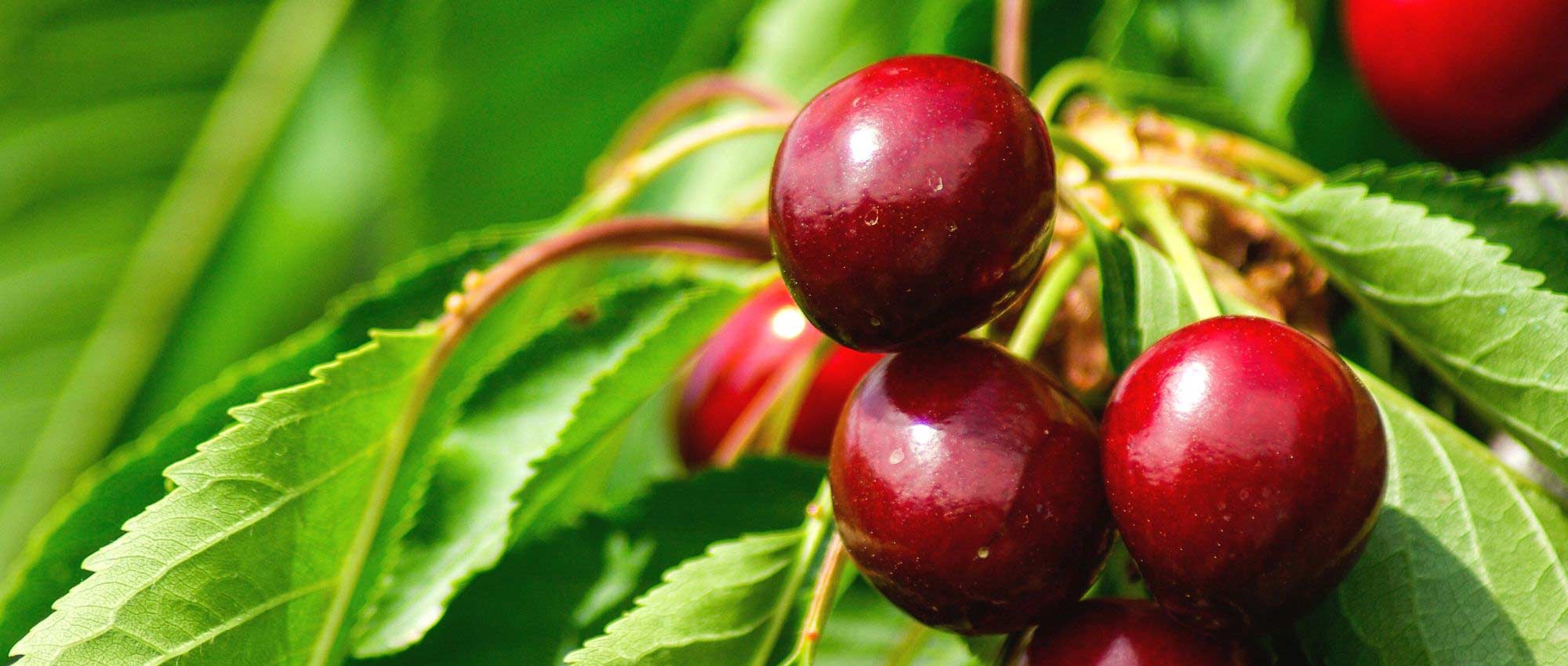
Cherry fruit fly: prevention and treatment
How to deal with it?
Contents
The cherry fruit fly, Rhagoletis cerasi, is a small insect that lays its eggs in cherries in early spring. The larvae hatch and feed on the fruit, which turn brown and rot. It can completely ruin a harvest, leaving behind only worm-infested fruit. Discover our tips on how to identify them, reduce risk of attack and tackle them by trapping these insects!
Overview of the cherry fruit fly and the damage it causes
The cherry fruit fly is called Rhagoletis cerasi. It is a dipteran, like other flies, midges, hoverflies and mosquitoes, whose particularity is having only a single pair of wings. The cherry fruit fly measures 4 to 5 mm in length. It has a black body with a yellow spot on the back, but is above all easily recognisable by its translucent, striated wings with black bands. It attacks only cherries.
In spring, from late April through to June, adults settle on fruit, pierce the epidermis and lay their eggs there. A fly can lay between 60 and 70 eggs, with one egg per cherry. Larvae hatch in one to two weeks and generally settle in the centre of the fruit, around the stone. They develop by feeding on the fruit for three weeks to a month. Afterwards they fall to the soil and burrow into the earth where they will transform into pupae. These pupae can remain in the soil for two to three years before emerging in spring to repeat the cycle and lay eggs in fruit.
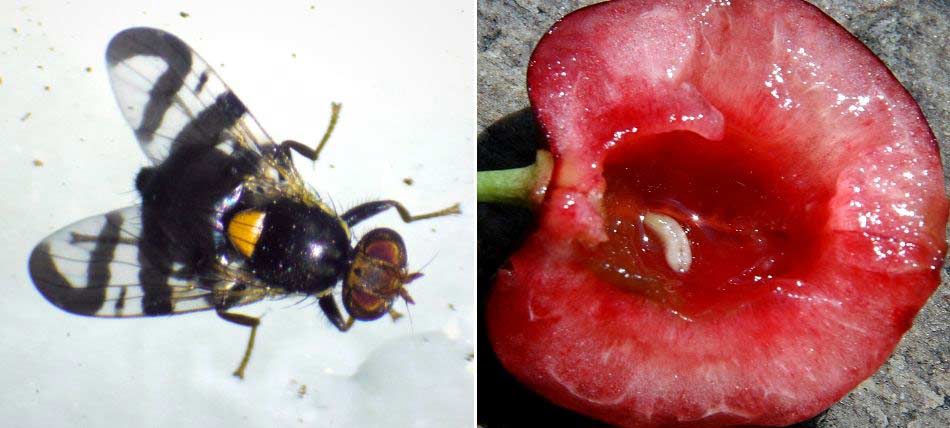
Cherry fruit fly: adult and larva in a fruit (photos: Drahkrub / Bauer Karl)
What are the symptoms?
After harvesting cherries, if infested, you may find small white maggots inside when opening them. Maggots measure up to 6 mm in length.
You can also spot affected fruit because they bear a small hole and brown spots appear. Sometimes affected fruit fall to the soil before ripening. If fruit fall or rot for no apparent reason, do not hesitate to open a few to check for maggots inside.
There is another insect that attacks cherries: the Asian fruit fly, Drosophila suzukii, which arrived in France in the early 2010s. It attacks several soft fruits: raspberries, strawberries, plums, cherries… It is smaller than the cherry fruit fly, measuring only 2 or 3 mm in length. It has a light brown body and red eyes. Like the cherry fruit fly, the Asian fruit fly lays its eggs in fruit before it is ripe; the eggs hatch and the larvae feed on the flesh of the fruit. Affected fruit tend to become soft and mushy. With Drosophila suzukii, several larvae develop in a single fruit, whereas with the cherry fruit fly there is generally only one maggot per fruit.
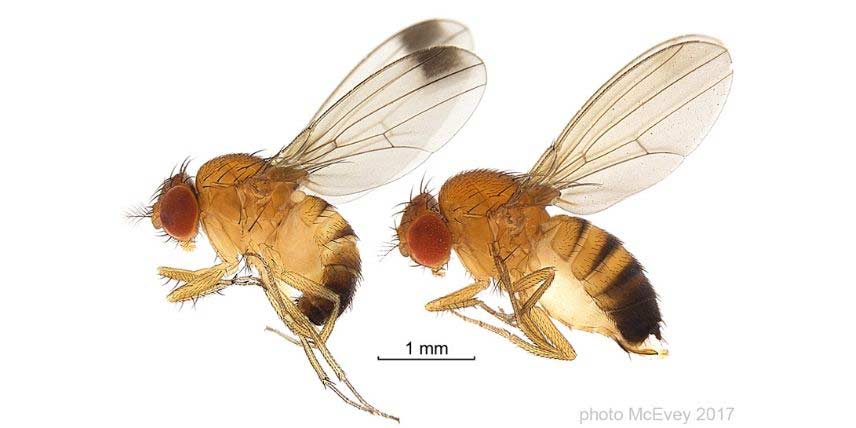
The Asian fruit fly Drosophila suzukii: male and female (photo Shane F. McEvey, Australian Museum)
Read also
How to protect fruit trees from birds?Prevention methods
In order to avoid or limit attacks :
- Prefer early varieties, which are harvested in May–June, rather than late ones. They are much less affected by cherry fruit fly. For example, you can grow cherry trees ‘Burlat’, ‘Bigarreau hâtif Delbart’, ‘Early Rivers’, ‘Napoléon’, ‘Bigarreau de la Saint Jean’…
- Do not leave ripe fruit on the tree and remove any that fall to the ground. They may harbour larvae and perpetuate the cycle. If fruit are ripe and not infested, you can eat them; otherwise throw them away (do not compost them!).
- You can also lay a tarpaulin under the cherry tree to prevent larvae from sheltering in the soil.
- Another solution is to hoe the soil around the cherry tree to destroy the larvae. More simply, keep chickens there! They will scratch the soil and eat the larvae, which are only shallowly buried in the soil.
- For Drosophila, it is also important to destroy ripe fruit to eliminate larvae.
Discover other Cherry trees
View all →Available in 1 sizes
Available in 1 sizes
Available in 0 sizes
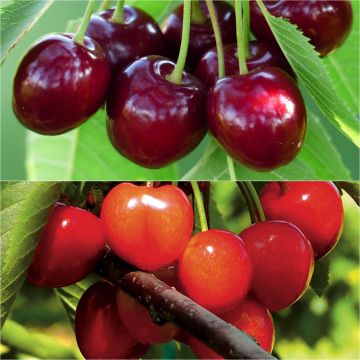
Available in 0 sizes
Available in 2 sizes
Available in 0 sizes
Available in 1 sizes
Available in 0 sizes
Available in 6 sizes
Available in 1 sizes
Natural treatments against cherry fruit fly
Intervene at start of spring, before fruit are ripe and insects have time to lay eggs.
- Glue-coated cardboard colour traps
Most effective and ecological method is to use yellow cardboard discs covered with glue. Flies are attracted to yellow and get stuck on trap. These discs, easily found in shops, should be installed from April. Place three or four for a modest-sized tree, increasing number for a large tree. These discs have a hole in the centre, which makes it easy to slide them onto branches of cherry tree. Generally, these traps are also coated with pheromones to specifically attract cherry fruit fly. It is a natural solution, avoiding use of synthetic pesticidal products.
- Pheromone traps
These are plastic containers with a funnel lid. Insects are attracted, enter and drown in a solution placed at bottom of container that contains pheromones. These pheromones are available commercially in capsule form to insert into trap. This attracts males by mimicking female sexual plant hormones, which prevents fertilization and therefore laying of eggs in fruit.
Discover all you need to know about pheromone traps in our advice guide.
- Natural insecticidal product based on pyrethrum
You can spray a pyrethrum-based insecticidal product (derived from Tanacetum cinerariifolium), but its effectiveness remains limited. Moreover, it may also kill other insects, not just cherry fruit fly, which will harm ecological balance of your garden.
- There is also a natural treatment based on entomopathogenic fungus Beauveria bassiana. Spores of fungus reach insect, germinate and kill it. However, this solution is mainly intended for professionals.
- Against cherry fruit fly, it is sometimes recommended to spread iron sulphate on soil in late winter. However, we advise against this solution because it is an irritant to skin, respiratory system and eyes. It may also harm earthworms and ecological balance of your garden.
- Against spotted wing drosophila Drosophila suzukii, you can find in shops a dedicated trap, made of plastic, into which you place a liquid bait that will attract the parasitic insect.
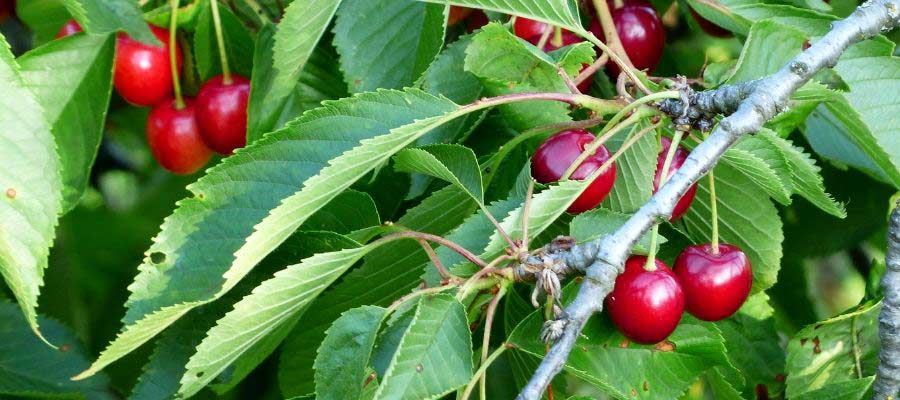
Make a trap
It is easy to make a trap for Drosophila using a plastic bottle. Start by drilling six or seven 3 mm holes near the top, in the neck of the bottle, or fit a bottle adaptor, specially designed to trap Drosophila. Then place a liquid bait in the bottle, or make your own mix of apple cider vinegar and red wine with one or two drops of washing-up liquid. Finally, close the bottle and hang it from a branch of the tree.
- Subscribe!
- Contents
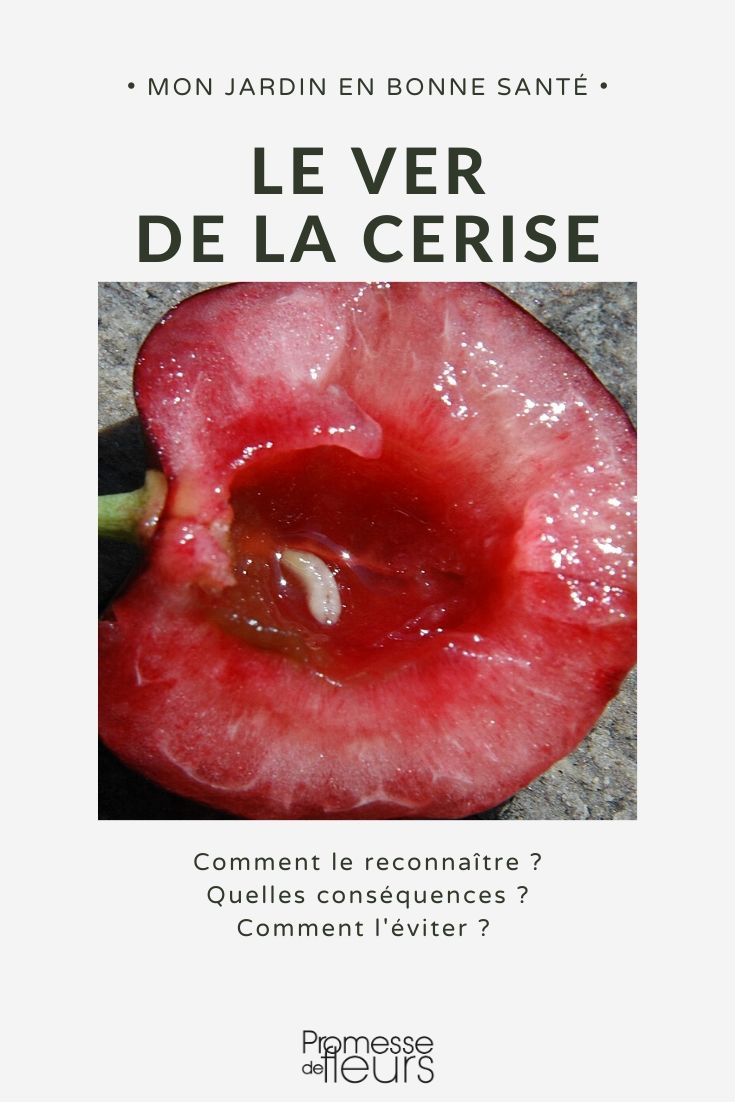































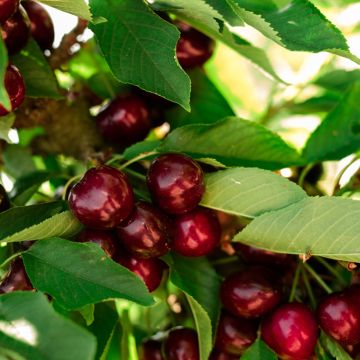
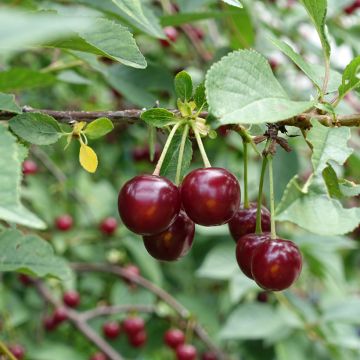
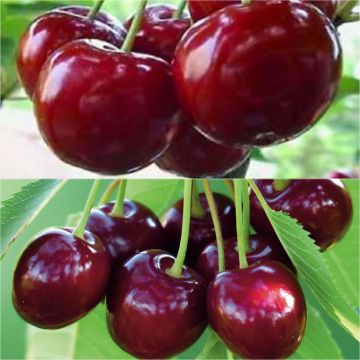
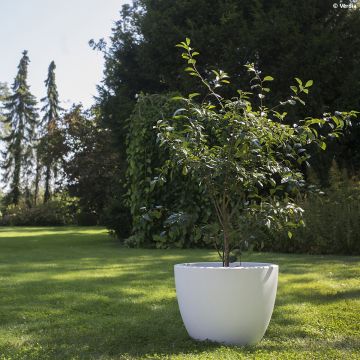
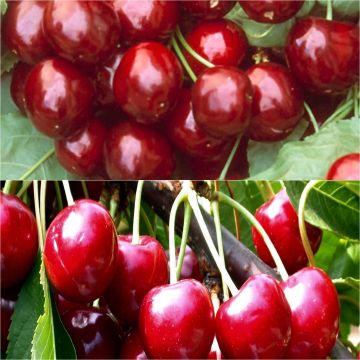
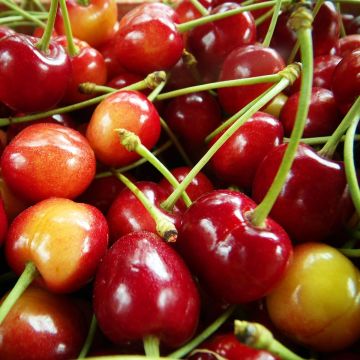
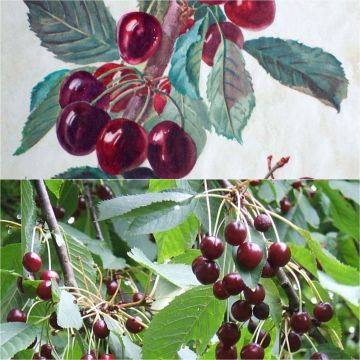
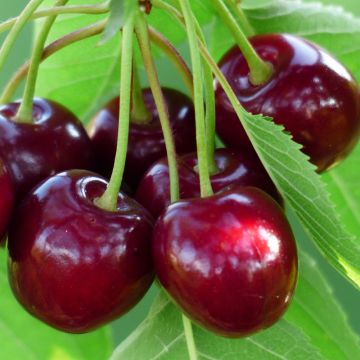
Comments